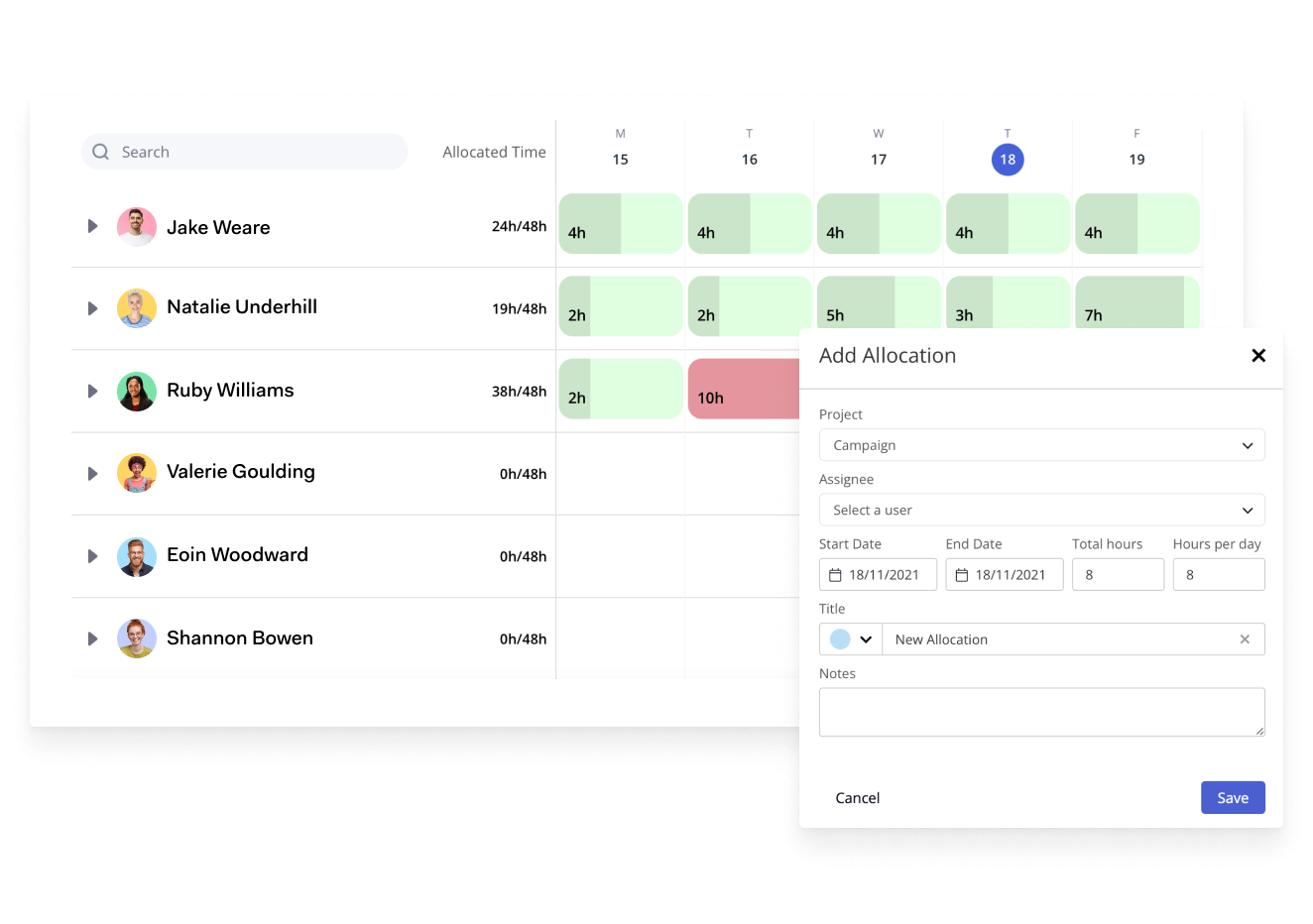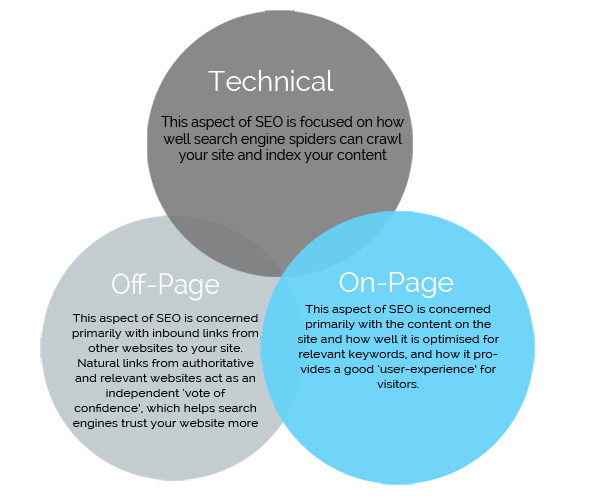SEO project management is a strategic framework for promoting your website’s visibility, increasing brand exposure, and gaining credible leads through search engines.
It is based on a complete integration of SEO into a series of business workflows that ensure that search optimization best practices are reflected in every phase of digital content creation and other processes relevant to managing digital presence.
Why SEO Project Management Matters

Effective integration of SEO into an agency’s marketing, website and development or team can be very challenging.
Even nowadays, many employees have no experience working with SEO professionals.
They may not understand the value SEO can offer to their existing workflows or believe these workflows are working well enough without them.
Therefore, it is vital to explain the key benefits of SEO in ways that demonstrate how they can be applied to the various needs of the team in different departments and actively improve them.
What Should Be Included In SEO Project Management

The following initiatives are just a few of the many that SEO professionals can use to support process integration as part of their SEO project management efforts.
Topic Ideation
Use keyword research to discover content topics and themes that will help you rank for keywords and terms that are important to your business.
This search can uncover whitespace for new content or opportunities to update existing content.
Content Calendar/Seasonality Recommendations
Analyze keyword popularity and seasonality of use to decide when to publish or update content.
Brief Support
Provide recommendations for keywords that should be used throughout the piece, including title tags, page title, meta description, headings, body content, social text, and alt text.
Traffic Projections
If your keyword research and recommendations included in the content are based on monthly search volume (MSV) and estimated final ranking, you can calculate estimated organic traffic / users.
While these estimates cannot be directly applied to other channels, keywords continue to be an indicator of intent.
So by including keywords with decent MSV, you know there is interest in the topic.
And by writing content that you know your audience is looking for, you could also encourage additional traffic from content shares and clicks from email links.
Copy Review
Text review in the context of keyword research supports existing SEO efforts to make sure the correct keywords are included.
In this way, they are used to match the audience’s search intent, where the right range and volume of topics adequately support the topic.
So there’s not too much corporate jargon or too many company-centric terms that the public may not be familiar with.
Excessively niche or branded language probably won’t mean much to most searchers when they see it on the search engine results page (SERP).
Content Publication
Ensure the availability through the correct configuration of the new website URL.
Without proper SEO implementation, you risk Google (and other search engines) failing to find your content, rank it well, or absorb all the content you’ve written.
If you want your content to be found in search engines:
This should help the content reach its full organic traffic driving potential and avoid errors that reduce findability.
Reporting
The proof of the value of SEO, or of any effort, comes down to the numbers.
You will need to demonstrate how the keywords you are actively searching for increase your ranking and how the importance of your content on page 1 of the SERPs grows.
To achieve this, and to report how your optimizations and new content you create, increase each of the following:
Collectively, these can help demonstrate the importance of SEO work and the value of incorporating it into project management plans.
Content Optimization
Ongoing SEO reporting should focus not only on the impact of new content, but also on the role of existing content.
Instead of wasting time, effort and money creating new net content, SEO can provide insight into opportunities to help existing content reach its full potential.
It can offer guidance for the most up-to-date language, topics and themes to incorporate and which reflect what is most relevant to the audience.
Updated and more accurate content will help improve the website’s jurisdiction on the subject and support any existing SEO authority.
And when Google crawls a recently updated site again, it breathes new life into the content and can increase the chances of it appearing higher in the SERPs.
Why Get Buy-In First Before Implementing SEO PM Processes

Before setting up new processes or moving on to make structural changes, it is important to obtain the consent of all associated team and leadership members.
Hold meetings with stakeholders, including creatives, products, demand gen, PR, events, marketing executives and company thought leaders to understand the benefits of implementation.
Re-formulate each conversation based on objectives, key performance indicators (KPIs) and expected results.
But consistently share the main point: SEO should never be an afterthought.
SEO begins in the creation and research phase of the brief.
It should be prioritized throughout, serve as a quality control before and after publication, and be reported to demonstrate results.
Demonstrate the value of the SEO workflows and goals listed above to highlight why SEO integration should not be considered an optional, but a necessary part of creating content and web pages.
Taking time to connect with team members will help prevent rejection – or at least reduce negative feedback – because they will understand the positives.
How To Create Effective Cross-Team SEO Project Management Processes

When it’s time to start integrating your SEO efforts into larger team processes, follow this holistic set of actions:
Establish The Role Of SEO In Your Company And/Or Department
Establishing the overall role of SEO will be very helpful in deciding where to start your efforts.
It will also help inform which of the above SEO project management integrations are most valuable to your current team, organization, and needs.
Start by establishing a thorough understanding of these two sets of processes:
Establish the actors involved in creating content for existing content processes, including copying, design, strategy, planning, social, etc.
You should also consider communication platforms, order of operations, timelines and deadlines, primary KPIs, any existing SEO efforts, and anything else included between the initial phase of starting a content, its eventual publication and tracking. .
For existing web / development processes, understand the technical steps required for publishing content.
Who is responsible for creating a new page?
Is the content management system (CMS) self-service and easy to use for someone outside the development team, or is more programming knowledge required?
Who, if anyone, is responsible for ensuring that SEO best practices are followed? Is there something built into the CMS that makes it easy to integrate SEO components?
Are there any structural implications for the site when creating new content? Are there any other technical SEO considerations?
It may take some time to answer all of these questions and figure out what else you need to know. But these are good starting points for understanding where SEO needs to be integrated.
Determine A New Set Of Collaborative Processes For Content Creation And Optimization
Once you’ve got a fairly thorough understanding of your team’s processes, it’s time to inject SEO into the spaces it should live in or decide how to change SEO’s current role to deliver maximum benefit.
Here is an example of an SEO-driven content creation process:
While multiple processes can be created to account for various content owners and creators, this example shows one of the more extensive ways SEO can get involved with content.
Finalize New Processes By Getting Leadership Approval
Although hopefully you’ve already received consent from leadership and other team members and departments, request further approval once the proposal is complete.
Sharing the process from start to finish of SEO and content integration will show how many ways SEO can contribute to the content process, which should help increase findability and traffic.
Understanding the full picture should help increase the appreciation of SEO efforts to optimize the entire workflow, thus further supporting SEO and building on your buy-in.
Share The New Processes With Team Members
Open communication is essential whenever processes change.
Make sure no one feels caught off guard or disconnected from the efforts they are involved in.
Plus, ensuring your entire team has visibility into your plans can help improve awareness, adoption, and accountability.
Communicate plans using the right technology
One of the most effective ways to do this is to leverage the right technology to communicate and track updates.
And the best way to advertise these processes is to include them in a project management or project monitoring software system.
Whether or not you’re using team and project management software, take the time to identify the best PM technology for your team’s needs.
Optimal software should include at least these five capabilities:
Implementing the right project management software
Programs like Asana allow you to create project templates that include each activity and accompanying subtasks of your plans with project descriptions, expectations, and links to relevant documents.
Each can be assigned to an individual with due dates or a range of start and end dates.
These platforms can send emails, Slack updates, and other notifications about you and the activities of your team members to keep each of you informed about assigned workloads.
As long as the tasks are set up correctly, you can rest assured that each team member clearly understands the new expectations, timing, and dependencies between SEO and other departments.
And everyone will have clear visibility on deadlines, so you don’t have to remember them.
Configure and share new processes in PM software before launch
Be very clear and straightforward when it comes to implementing new project workflows before starting them.
Communicate with the relevant content team and product team members about:
Accept any feedback and update the process as needed.
Implement New Project Workflows
Follow the flow you created to create content from scratch or update it.
Test
With all your complete planning (and a little luck), your new SEO integration efforts will go smoothly.
But just in case, test and carefully monitor the progress and completion of the first few iterations.
Confirm if everything is going according to plan, if there are any flaws or gaps, if the assigned SEO has the resources they need, and if there is feedback from the team.
Watch out for deadlines, if more lead time is needed, and if given everything you and your team members need to accomplish, the whole team can deliver the best SEO result during each step of the process.
If not, don’t hesitate to make changes to your plans.
It is better to delay full implementation than to proceed in a way that does not allow you to demonstrate the full impact of your efforts.
Track Performance Of Content That’s Been Created With Your New Processes
Finally, keeping track of your efforts is critical to maintaining consensus on any SEO project management strategy or process.
Measure your performance against historical benchmarks of similar content, focusing primarily on organic traffic and activity from organic search.
Decide which organic KPIs are most important to you; for example, traffic to your blog, form conversions, time on page, or newsletter subscriptions.
Then, identify and establish projections for each.
Your projections should be based on things like historical performance, ranking expectations, MSV for targeted queries for new content, and promotional plans that drive traffic.
Increasing traffic through non-organic channels can be an additional way to measure the success of SEO efforts as keywords represent search intent, so you know your audience is looking for the content you create.
If they see it in email, social, or ads and click at a faster rate, you can assume that the search intent applies to other channels.
Start your reporting by first identifying your data sources.
For website analytics and site traffic, you may use Google Analytics or Adobe.
For form conversions or newsletter subscriptions, you will use a MAP.
Connect with the owners of these tools, such as an expert on your marketing automation team, to determine what can be automated and how you can start creating reports to track KPIs.
Even without automated resources, there are plenty of free tools and APIs to help you.
For those with more resources, this is where investing in an SEO platform can really help aggregate all of your data into one place to analyze and extract key insights.
Uncover Insights
Once you have your reports in place, regularly review the performance of your content.
Start with more frequent, granular reads to familiarize yourself with the nuances of the data, so you can start identifying small trends.
Before introducing yourself to leadership, take a step back and show a holistic overview of the impact of your efforts.
Be sure to consider how long it took Google to start ranking new content and when it starts generating organic traffic.
Report if content created through your new SEO project management system speeds it up.
The same goes for the amount of time it takes for conversions to start (and hopefully increase) after certain efforts.
Then analyze the best performing content types and topics.
Feed Learning Back Into Content Optimizations
Use all of these reports to your advantage and translate your results into optimizations for your process and pages.
Conclusion

While most content-related roles and skills have found ways to integrate into content search, creation, and optimization processes, SEO often struggles to emerge as a coherent, let alone mandatory, part of project management. team.
However, by approaching SEO project management with specific tasks in mind and a process that incorporates them, you’ll have the best chance of success, especially when the process can be carefully woven into your team’s existing efforts.
It may take time, but will ultimately display strategic initiative thinking that demonstrates holistic knowledge of an effectively optimized process, resulting in measurable performance improvement toward achieving your goals.
Featured Image: Andrey_Popov / Shutterstock
How many types of SEO are there?
There are about 12 different types of SEO that help websites rank better on search engine results pages.
What are the two types of SEO? 12 types of SEO
- SEO White Hat. When you hear someone say white-hat SEO, it means SEO practices that are in line with the terms and conditions of major search engines, including Google. …
- SEO Black Hat. …
- SEO Gray Hat. …
- On-page SEO. …
- Off-page SEO. …
- Technical SEO. …
- International SEO. …
- Local SEO.
What are the 3 types of SEO?
There are three main types of SEO: Internal (on-page SEO) External (off-page SEO) Technical SEO.
What is SEO and its types?
The term SEO, Search Engine Optimization, refers to improving your site’s visibility in Google’s search results for relevant keywords or search phrases. SEO helps generate site traffic naturally.
How many ranking factors does Google have?
Did you know that there are over 200 Google ranking factors? Google is by far the most popular search engine on the planet.
Does Google reveal its ranking factors? Google has never openly revealed their ranking factors.But as much as Google is promoting itself to offer to webmasters and SEOs, they don’t really give their secret sauce.
How many ranking factors are there in Google?
You may already know that Google uses over 200 ranking factors in its algorithm … But what exactly are they? Well, a surprise awaits you because I have put together a complete list.
What are Google’s top 3 ranking factors?
Google’s Andrey Lipattsev reveals that links, content and RankBrain are the top three ranking signals in Google’s search algorithm.
What is a backlink in SEO?
Links on websites other than your own that lead to a page on your website. Backlinks are also called inbound links because they represent traffic from another website to your site. The quality and quantity of your backlinks can help you rank higher in search engines like Google and Bing.
What is the difference between links and backlinks? What is the difference between backlinks and internal links? Backlinks are links from other websites that point to your site. Internal links are links that point from one page to another on your site. Both have SEO value, but backlinks are generally harder to obtain and, therefore, considered more valuable.
What is backlinks and how it works?
A back link is also known as a hyperlink or inbound link. In SEO, backlinks are inbound links that lead from other web pages to your web pages. Google treats these backlinks as a “stamp of approval” between two websites. The more backlinks a page has, the more likely it is to rank high on Google.
What are backlinks and how do I get them?
Backlinks (also known as “inbound links”, “inbound links” or “one-way links”) are links from one website to a page on another website. Google and other major search engines consider backlinks “votes” for a specific page. Pages with a large number of backlinks tend to have high organic rankings in search engines.
What are backlinks with example?
Backlinks are links from one page of a website to another. If someone links to your site, then you have a backlink from them. If you connect to another website, they have a backlink from you. For example, these words link to YouTube, so they now have a backlink from us.
What is a backlink and why is it important?
Backlinks, also known as inbound or one-way links, are simply links pointing to your website from another website. The best part about backlinks is that they help promote your blog or site by simply being hyperlinked to you from another source.
What is backlink in SEO with example?
Backlinks are links from one page of a website to another. If someone links to your site, then you have a backlink from them. If you connect to another website, they have a backlink from you. For example, these words link to YouTube, so they now have a backlink from us.
What is a backlink and why is it important?
Backlinks, also known as inbound or one-way links, are simply links pointing to your website from another website. The best part about backlinks is that they help promote your blog or site by simply being hyperlinked to you from another source.
What is backlink and how does it work?
Backlinks occur when a website links to another website. Also referred to as inbound or inbound links, backlinks make their connection through external websites. These links from external domains point to pages on your domain.
What are backlinks in simple terms?
Backlinks (also known as “inbound links”, “inbound links” or “one-way links”) are links from one website to a page on another website. Google and other major search engines consider backlinks “votes” for a specific page. Pages with a large number of backlinks tend to have high organic rankings in search engines.
What makes good SEO content?
In an effective content SEO strategy, your keyword strategy and the way you structure your site work together. In a proper keyword strategy, you will have thought of common and competitive keywords as well as longer tail niche search terms. You should create a similar dichotomy in the structure of your site.

